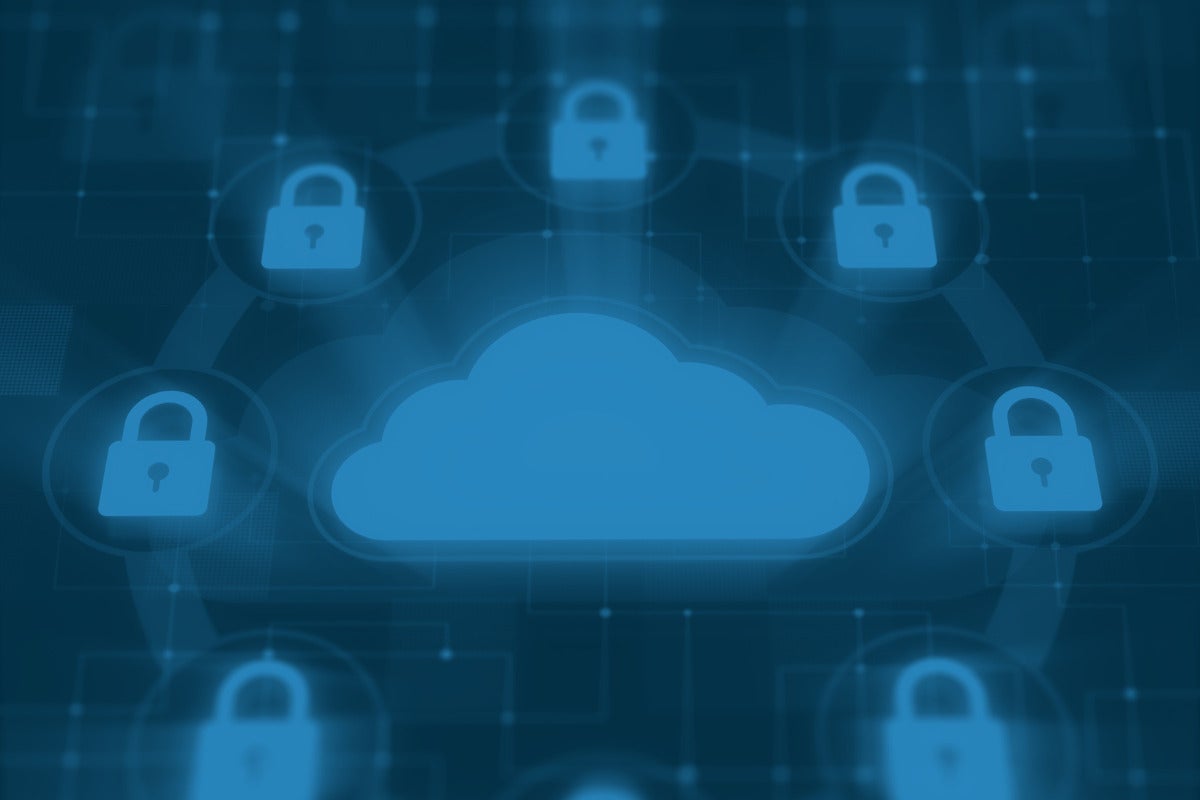Hybrid work is the future, and innovative technology will define it

We’re starting to see an amplification of recognition tools, of coaching
platforms, of new and exciting ways to learn that are leveraging mobility and
looking at how people want to work and to meet them where they are, rather than
saying, “Here’s the technology, learn how to use it.” It’s more about, “Hey,
we’re learning how you want to work and we’re learning how you want to grow, and
we’ll meet you there.” We’re really seeing an uptake in the HR tech space of
tools that acknowledge the humaneness underneath the technology itself. ... The
second layer consists of the business applications we’ve come to know and love.
Those include HR apps, business applications, supply chain applications, and
financial applications, et cetera. Certainly, there is a major role in this
distributed work environment for virtual application delivery and better
security. We need to access those mission-critical apps remotely and have them
perform the same way whether they’re virtual, local, or software as a service
(SaaS) apps -- all through a trusted access security layer.
Web 3: How to prepare for a technological revolution
It hardly needs to be said, but over the last few decades, the internet has
grown to be arguably the most integral cog ensuring a smooth-running,
functioning society. It is so ingrained that almost every industry in the world
would be unable to function properly without it. And this reliance will only
grow as Web 3 becomes the norm, which makes it critical that we begin to educate
children now on its uses and how to navigate it. Already, many of today’s adults
will find it difficult to explain what Web 3 is, let alone teach the next
generation how to use it. Educating children early will not only help them
thrive in the future, but they will also be able to pass gained knowledge up the
chain to their parents. This is, of course, just history repeating itself. It is
the equivalent of kids showing their parents how to use a touch screen or work
their email. But the revolution Web3 is about to bring is on a different scale
to any previous technological advancement. Soon, the greatest opportunities will
be solely available on the new internet, and it is critical we ensure every
child has the opportunity to succeed.
Health data governance and the case for regulation

Without appropriate data governance procedures and training in place, healthcare
organizations are likely to find themselves in danger of noncompliance. HIPAA
violations in particular can occur at any level of an organization; if an
undertrained staff member or unsecured database is operating in your
organization, there’s a huge likelihood that they will eventually misuse patient
data and breach HIPAA regulations. This kind of breach can lead to
noncompliance, fines, legal issues, poorer patient experiences and even a loss
of trust within the greater medical community. Data governance means the
difference between a successful and fully operational facility and a facility
that gets shut down by the government. On the other hand, when data governance
principles are applied successfully in the healthcare sector, a slew of benefits
outside of basic compliance can be realized. Patients feel confident that their
information is safe and begin to refer their friends and family members to your
network. Data becomes easier to find, label and organize for new operational use
cases and emerging patient technologies.
Closing the Gap Between Complexity and Performance in Today’s Hybrid IT Environments
Nowadays, the increasing need for security on all fronts has fueled collaboration between teams on a regular basis. This, in turn, has spurred more proactivity from an internal IT operations perspective. Proactivity, bolstered by a unified view into traffic and communication, is a key aspect of closing the gap between cloud complexity and performance — because it starts at the IT cultural level. Technical capabilities like deep observability can support team prioritization of detection and management on a more holistic level, addressing all aspects of IT infrastructure. With this, organizations can feel more confident in overcoming cloud-based challenges and mitigating connected cyber vulnerabilities as a collective force. An all-encompassing, proactive approach is needed to speedily detect cyber threats, respond to the corresponding activity, and enact a remediation plan. Within hybrid and multi-cloud environments, data and communication costs can skyrocket. The most common use cases stem from packets, which can interfere with control of and visibility into the right data.
Blockchain and artificial intelligence: on the wave of hype

Blockchain is an innovative digital information storage system storing data in
an encrypted, distributed ledger format. In work, the data is encrypted and
distributed across multiple computers, which creates tamper-proof. It is a
secure database that can only be read and updated by those with permission.
There are a few examples on the web today of blockchain and artificial
intelligence being interconnected. Academics and scientists conducted the study.
But we see the two concepts working well together. ... Today’s computers are
extremely fast, but they also require a constant supply of data and
instructions, without which it is impossible to process information or perform
tasks. Therefore, the blockchain used on standard computers requires significant
computing power because of the encryption processes. Secure data monetization
could be the result of combining blockchain and artificial intelligence.
Monetization of collected is a source of revenue for many companies. Among the
big and famous ones are Facebook and Google resources.
How MLops deployment can be easier with open-source versioning

Among the many reasons why there are a growing number of vendors in the sector,
a significant one is because building and deploying ML models is often a
complicated process with many manual steps. A primary goal of MLops tools is to
help automate the process of building and deploying models. While automation is
important, it only solves part of the complexity. A key challenge for artificial
intelligence (AI) models, that was identified in a recently released Gartner
report, is that approximately only half of AI models actually end up making it
into production. From Guttmann’s perspective, with application development,
developers tend to have a linear way of building things. This implies that for
example, new code written six months after the initial development is better
than the original. That same view does not tend to work with machine learning as
the process involves more research and more experimentation to determine what
actually works best. “Development is always money sunk into the problem until
you actually see the fruits of the effort and we want to decrease that
development time to a minimum,” he said.
Robotic Process Automation Will Shape the Future of Hotel Operations

On the guest-facing side of the business, automation can be applied to virtually
every touchpoint of the guest journey. Marketing automation comes in the form of
upsell opportunities, re-marketing or recovery campaigns in the pre-stay,
pre-check-in and post-cancellation stages. In the back of the house, automation
is helping the marketing, revenue and sales departments get more done with fewer
resources. Integrated CRM systems have become the heart of new, guest-centric
personalization strategies such as automated email marketing programs that are
proving to be huge time-savers. Revenue managers are tapping automation to stay
on top of pricing and demand trends. RPA reduces the common challenges presented
by running a business on a fragmented tech stack. Siloed systems often lead to a
great deal of manual effort, such as copying, importing, exporting data from one
system to another, or the common “swivel-chair integration.” Through RPA,
operators can create workflows that fill feature gaps or replicate features from
other systems, saving them time and money.
Russian hackers' lack of success against Ukraine shows that strong cyber defences work

Since the invasion, Cameron said, "what we have seen is a very significant
conflict in cyberspace – probably the most sustained and intensive cyber
campaign on record." But she also pointed to the lack of success of these
campaigns, thanks to the efforts of Ukrainian cyber defenders and their allies.
"This activity has provided us with the clearest demonstration that a strong and
effective cyber defence can be mounted, even against an adversary as well
prepared and resourced as the Russian Federation." Cameron argued that not only
does this provide lessons for what countries and their governments can do to
protect against cyberattacks, but there are also lessons for organisations on
how to protect against incidents, be they nation-state backed campaigns,
ransomware attacks or other malicious cyber operations. "Central to this is a
commitment to long-term resilience," said Cameron. "Building resilience means we
don't necessarily need to know where or how the threat will manifest itself
next. Instead, we know that most threats will be unable to breach our defences.
And when they do, we can recover quickly and fully."
The Unlikely Journey of GraphQL

GraphQL is drawing the spotlight because refactoring or modernization of
applications into microservices is stressing REST to its limits. As information
consumers, we expect more from the digital platforms that we use. Shop for a
product, and we also will want to find reviews, competing offers, autofill
keyword search, and likely other options. Monolithic apps crack under the load,
and for similar reasons, the same fate could be happening to REST, which
requires pinpoint commands to specific endpoints. And with complex queries, lots
of pinpoint requests. Facebook developers created GraphQL as a client
specification for alleviating the bottlenecks that were increasingly cropping up
when fetching data from polyglot sources to a variety of web and mobile clients.
With REST, developers had to know all the endpoints. By contrast, with GraphQL,
the approach is declarative: specify what data you need rather than how to
produce it. While REST is imperative, GraphQL is declarative.
Cryptojacking, DDoS attacks increase in container-based cloud systems

The Sysdig repot also noted that there has been a jump in DDoS attacks that use
containers since the start of Russian invasion of Ukraine. "The goals of
disrupting IT infrastructure and utilities have led to a four‑fold increase in
DDoS attacks between 4Q21 and 1Q22," according to the report. "Over 150,000
volunteers have joined anti‑Russian DDoS campaigns using container images from
Docker Hub. The threat actors hit anyone they perceive as sympathizing with
their opponent, and any unsecured infrastructure is targeted for leverage in
scaling the attacks." Otherwise, a pro-Russian hacktivist group, called Killnet,
launched several DDoS attacks on NATO countries. These include, but are not
limited to, websites in Italy, Poland, Estonia, Ukraine, and the United States.
“Because many sites are now hosted in the cloud, DDoS protections are more
common, but they are not yet ubiquitous and can sometimes be bypassed by skilled
adversaries,” Sysdig noted. “Containers pre‑loaded with DDoS software make it
easy for hacktivist leaders to quickly enable their volunteers.”
Quote for the day:
"Good leaders value change, they
accomplish a desired change that gets the organization and society better."
-- Anyaele Sam Chiyson
No comments:
Post a Comment